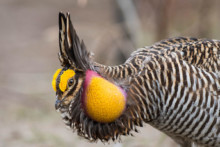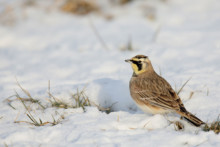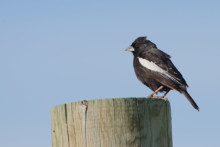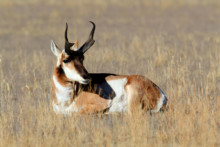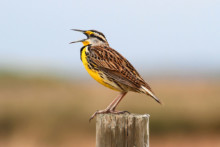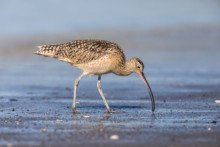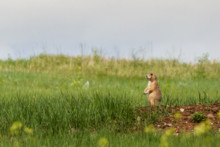Colorado’s native prairie once covered nearly half the state, and is still one of the most intact grasslands remaining in the Great Plains region. Ranching and farming are the primary agricultural practices that occur in this region. Plants and animals on the eastern plains of Colorado evolved with grazing, and under good management, cattle will increase the health of a prairie ecosystem. Private landowners provide habitat for more than 70% of the wildlife species in the state. Although the buffalo are gone, many mammals still roam the plains, including pronghorn, mule deer, badger, coyote, jackrabbit, and Ord’s Kangaroo Rat. Prairie-dogs still burrow under the surface of the prairie in many areas. Tarantulas can be seen migrating across the roads in October.
Sometimes the avifauna provides the best indicator of how “native” a particular patch of prairie is. McCown’s Longspur and Long-billed Curlew tend to be associated with the highest-quality patches. Mountain Plover and Burrowing Owl are often found in or near prairie-dog downs, the plover thanks to its fondness for extremely short grass, the owl thanks to its fondness for prairie-dog burrows, and Ferruginous Hawks for their fondness for prairie dogs. The prairie-dogs also provide habitat for rattlesnakes, rabbits, and tiger salamanders to mention a few. Chestnut-collared Longspur can be found in small areas in the state that have slightly longer grass, sometimes called mid-grass prairie, on the Pawnee. Other typical prairie birds include Horned Lark, Vesper and Grasshopper Sparrows, Lark Bunting and Western Meadowlark. Butterflies include the beautiful Olympia Marble and the stunning Regal Fritillary.
Besides the many species of grass, prairie plants in Colorado include flowers such as pasqueflower (also called crocus or anemone) and gayfeather (also called liatris). About four species of spiky yucca plants occur in Colorado’s dry and rocky areas, and it forms extensive stands in the “sandsage” of the eastern plains. Many good-sized patches support breeding Cassin’s Sparrow; a few of the remote ones have Greater or Lesser Prairie-Chickens. The fascinating Yucca Giant-Skipper is one of the distinctive butterflies associated with this habitat.
The most notable and abundant wetlands on the Colorado eastern plains are playa lakes. Playas are shallow, seasonal wetlands that lie in the lowest point of a closed watershed and collect and hold water from rainfall and runoff. In Colorado, there are more than 2,500 playa wetlands ranging in size from less than one acre to more than 50 acres.
Playas are the centers of biodiversity in this arid region, supporting more than 200 species of birds and other wildlife. The wetlands may be the most important habitat types for waterfowl and shorebirds in the region, hosting ducks such as Blue-winged Teal, Mallards and Northern Pintails, and shorebirds such as Long-billed Curlew, American Avocet and Snowy Plover. Canada and Snow Geese also migrate and winter in the playa lakes region in relatively large numbers. Playas are also the primary source of recharge for the Ogallala Aquifer, the largest groundwater formation in North America.


